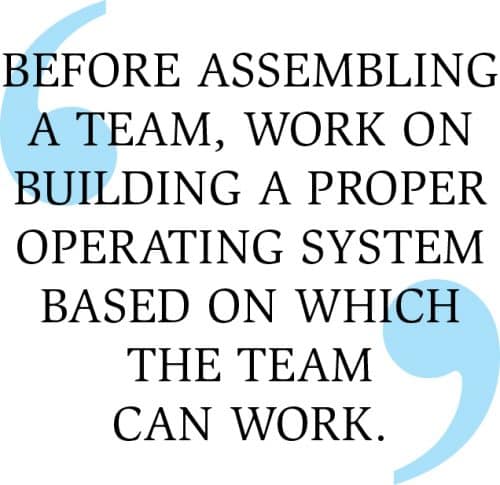 Are you working hard but still not getting investors for your start-up? Here’s how you can systematically raise your start-up’s value to the stars!
Are you working hard but still not getting investors for your start-up? Here’s how you can systematically raise your start-up’s value to the stars!
Building an electronics start-up is undoubtedly a lot of hard work but is also euphoric in a sense. When you build up your start-up, you slowly see your vision and dream taking shape. It is like your first child, and the very first moment you hold it in your hands it feels like the most joyous one ever.
So, it is clearly going to hurt when someone undervalues it. The hard work and struggles may feel unacknowledged. You may feel baffled and helpless trying to figure out where exactly did you go wrong. Read ahead to know how you can build assets that will sky-rocket your start-up’s value!
The first step towards finding out the formula to raising the value of your organisation is to ascertain if it is a start-up or a company. With so many start-ups coming up recently, a lot of people have been using the two terms interchangeably. But there is a clear distinction.
“Most people tend to call a company a start-up because of the glamour attached to the term. But it’s wrong. To put it simply, a start-up is a small company that has not yet found a working and scalable business model,” says Anand Tamboli, founder and CEO of Anand Tamboli and Co.
He adds, “If you have been working for more than two years and haven’t found a scalable and working business model, and you call your company a start-up even after being in existence for more than two years, you are probably wasting your time or money, or both.”
Assets are the single most important thing that can help raise the valuation of your start-up explosively. Although it seems simple, you would be surprised to know how many start-ups forget this critical point while trying to leverage their company.
But what exactly are these assets? And how can you use them to make your start-up more valuable?
The product
Assets are essential for driving investments into a start-up. It is no secret that a start-up needs investments to survive. No matter how much initial capital is invested in it, without investment it is extremely challenging to keep a start-up running. Not only are the assets required to carry out day-to-day operations but are also imperative for scaling your business smoothly.
“Income follows assets. And assets create value; they bring in revenue and raise a company’s value in the process. Until you have all the right assets your job is to build assets. There is no point in doing anything else but this,” says Tamboli.
 The first asset is your minimum viable product, also known as the MVP. It is the initial idea that drove you towards setting up your start-up. It is the foundation of your company that drives the future operations and actions of your business. But merely having an idea, on its own, is unsalable. The outcome or by-product of that idea is what brings in the money. And that is your MVP.
The first asset is your minimum viable product, also known as the MVP. It is the initial idea that drove you towards setting up your start-up. It is the foundation of your company that drives the future operations and actions of your business. But merely having an idea, on its own, is unsalable. The outcome or by-product of that idea is what brings in the money. And that is your MVP.
If you lack a tangible product, or an IP (intellectual property) to highlight the true value of your start-up, you will end up relinquishing a lot of equity to the investors, which you might regret later.
“One of the mistakes start-ups make is that they try to reach out to investors early on. And what happens is, you get the market rate on certain notional value. And if you are negotiating with an investor, you will have to accept whatever number they put because you have nothing to contest it out,” says Tamboli.
In the case of an electronics start-up, it could be a design that you have come up with or a niche product that you have discovered. Once you have your MVP ready, your start-up becomes much more solid in its functioning, even though your valuation might not rise much, because it then makes you ready to work on your next asset.
The core product is the next asset that comes out of your MVP. It is the tangible product or service that you can sell to consumers. It is what goes out into the market and what you show to the investors. It may be a low-function, low-feature product, but it is still a commercially sellable product.
Your Ecosystem
At this stage, Tamboli says, “Most people will tell you that the team comes first, and the rest comes later. Unfortunately, it is not the case! You first need to build an operating process and an operating system.”
Creating an organised set of activities to follow when creating your product is particularly important before you bring in any team to start manufacturing or building your product. You can have the best people in your team but without a set of guidelines, there is no chronology in the order in which a team works, and that will make your business go haywire. There will be no coordination between them, and that can cost your start-up not just precious time but also a lot of money. Money that you are scarce of.
“The team has to sell something, and for that the product has to be valuable. I cannot have a great guy on my team and a zero-value product. That is not going to go anywhere. But if you have a great product and do not have a great guy, you still have a positive value,” explains Tamboli.
So, before assembling a team, work on building a proper operating system based on which the team can work. Working out how you will manufacture your product, sell it, repair it, market it, and so on will provide you with much-needed clarity when starting off your electronics business.
Oops! This is an EFY++ article, which means it's our Premium Content. You need to be a Registered User of our website to read its complete content.
Good News: You can register to our website for FREE! CLICK HERE to register now.
Already a registered member? If YES, then simply login to you account below. (TIP: Use 'forgot password' feature and reset and save your new password in your browser, if you forgot the last one!)







